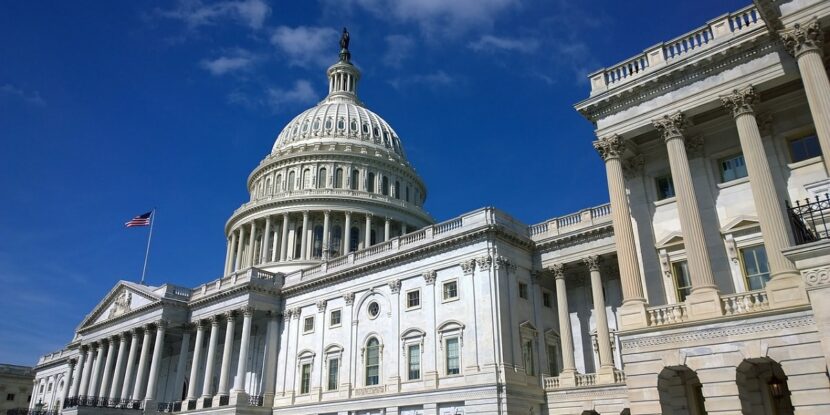The education swamp-expanding budget process discussed a few weeks ago is now near completion. The table below shows the final levels of difference between this fiscal year and last in the column in bold. Sadly, none of the unconstitutional, wasteful, ineffective programs were cut. The “best” outcome in some cases was that a couple of them were not increased. It is a sad state of affairs, but totally not surprising in an election year.
The Senate voted 93-7 to pass the conference report, and the House will vote on it this week. The budget’s education spending is just one of many examples of poor priorities this fiscal year. Eagle Forum notes that the budget “does not defund Planned Parenthood, supports research that justifies sterilizing children suffering from gender dysphoria, and provides no conscience protections for medical professionals who disagree with abortion procedures.”
The two education programs receiving the biggest funding increases were Title I, the main federal education program for disadvantaged children (received a $100 million increase) and Head Start, the main federal program for disadvantaged preschool children (received a $125 million increase). Title I is most often the excuse the feds use to expand unconstitutional control over education that should be handled at the local level like ESSA, No Child Left Behind, etc. Head Start is infamously and disastrously ineffective.
Other notable notable takeaways from the budget include:
- The funding for the very problematic Preschool Development Grants continues at $250 million per year.
- There was an increase of $40 million for charter schools. Charters — especially corporate and foreign controlled charters — are problematic from the perspective of federal control and numerous other issues that are of concern across the political spectrum.
- Funding was slightly increased for the 21st Century Community Learning Centers (a.k.a. “Parent Replacement Centers“) and Student Support and Academic Enrichment grants in ESSA which are being used for both physical school safety measures, as well as the more invasive and subjective school based mental health and social emotional learning programs. These programs had received large increases in FY 18.
- The Institutes for Education Sciences (IES), the data-mining arm of USED that includes the National Center for Education Statistics (NCES) and the National Assessment of Educational Progress (NAEP), received a slight increase of $2 million over last year. Student data privacy issues are popping up everywhere due to the push for more mental health and SEL data relating to school safety and the increasing use of education technology for many classroom applications including personality profiling and career matching/slotting. Student data mining and sharing without parental consent is becoming so worrisome that the FBI just recently issued a warning for parents.
- The good news is that neither chamber took up the plan to merge the U.S. Departments of Education and Labor that is unpopular with conservatives and liberals alike and will do little to maintain a free-market economy.
You may wish to contact your U.S. House member to express your opinion about deficit spending for these egregious programs. As the midterm elections approach, please remember that we need policy makers that understand the fiscal — as well as the academic, psychological, and constitutional — dangers of these programs.
Spending on Federal Education Programs (all numbers in millions of dollars)
| PROGRAM | FY 18 ENACTED | FY 19 HOUSE Committee | FY 19 SENATE Committee | FY 19 WHITE HOUSE Proposed | HOUSE – WHITE HOUSE | HOUSE 19 – ENACTED 18 | SENATE 19 – WHITE HOUSE | SENATE 19 – ENACTED 18 | FINAL BILL 19 – ENACTED 18 |
| Title I for Disadvantaged Children | $16,443.8 | $16,443.8 | $16,568.8 | 15,926.8 | $517 | $0 | $642 | $125 | $100 |
| Student Support & Academic Enrichment (Including MH/SEL) | $1,100 | $1,200 | $1,225 | $0 | $1,200 | $100 | $1,225 | $125 | $70 |
| 21st Century Learning Centers | $1,211.7 | $1,211.7 | $1,211.7 | $0 | $1,211.7 | $0 | $1,211.7 | $0 | $10 |
| Institute for Education Sciences (Data Mining) | $613.5 | $613.5 | $615.5 | $521.6 | $91.9 | $0 | $93.9 | $2 | $2 |
| Head Start | $9,913 | $9,963 | $10,163 | $9,275 | $638 | $50 | $888 | $250 | $240 |
| Preschool Dev. Grants | $250 | $250 | $250 | $0 | $250 | $0 | $250 | $0 | $0 |
| Charter Schools | $400 | $450 | $445 | $500 | -$50 | $50 | -$45 | $45 | $40 |


